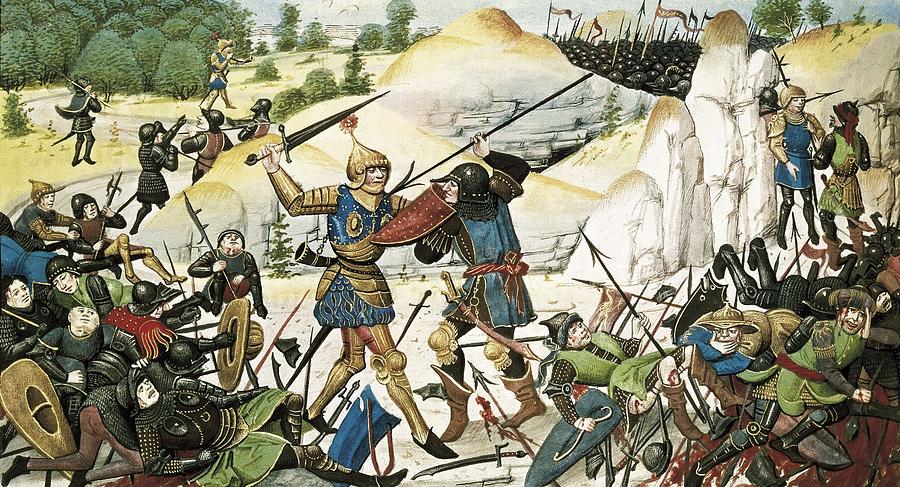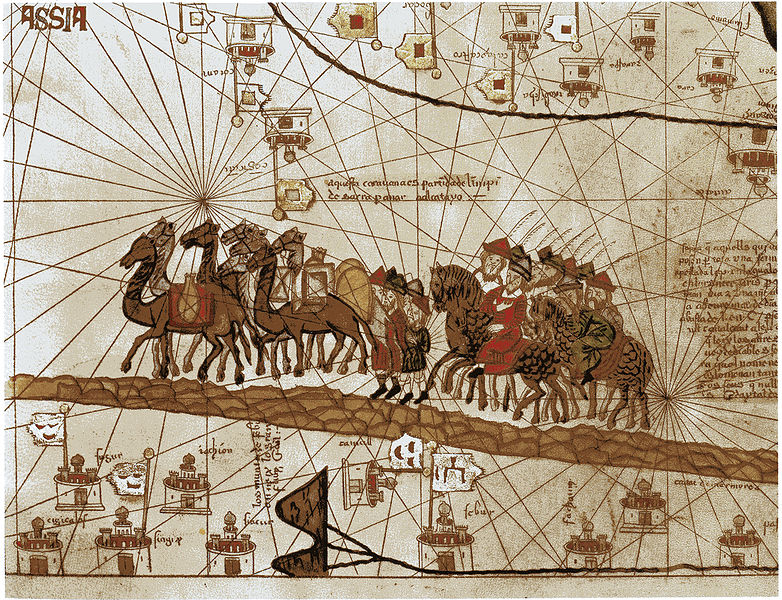Home » Posts tagged 'Christianity'
Tag Archives: Christianity
The Dream of the Rood
anonymous (Anglo-Saxon)
7th-8th century
(In a vision, the cross of Christ reflects with awe on its part in the death of God.)

“The most beautiful of the medieval religious poems”. This is often said of The Dream of the Rood. The first time I read this assessment—I had never even heard of the poem—it was by the Anglo-Saxon scholar R. K. Gordon in the colorful old Everyman Library series. The description as beautiful captured my attention. And it is beautiful. The vivid imagery, the incorporation of heroic and mystical themes, the profound devotion, the ethereal vision, the very language. Seeing such a work called beautiful is gratifying, for it highlights a virtue that is often languishing in recent religious literature, and religious sensibility in general. In both East and West, the enjoyment of beauty has frequently been marred by a suspicion that it may tempt one to elevate the lower over the higher, or to submit to illusory or distracting pleasure. Calling a religious poem “beautiful” recalls a time and a place when beauty was a central value in the building of churches, in the composition of sacred music, in devotional images and writings, and even in the grounds for the faith commitment itself. There have been times and places when the contemplation and enjoyment of beauty was widely embraced, on the idea, as Aristotle said, that “Beauty is the gift of God.”
The Song of Roland
(La Chanson de Roland)
anonymous (Turold?)
late 11th century
(The mightiest and noblest of Charlemagne’s crusading knights is betrayed, but his companions stand fiercely by him as the Saracens attack.)

The year is 778. The brave knight Roland and his army, led by eleven of the noblest warriors in Christendom, watch in horror as an army five times larger than their own approaches through the Roncevaux Pass in the Pyrenees. Roland’s friend Oliver urges him to call for Charlemagne’s aid with his famed olifant horn. Roland will not. He will trust to God, to France, and to his sword Durendal. He shouts a rallying speech to his men– this is their day to shine. They banish fear and meet the Saracens. This is an anthem of a book– a mighty, direct, vibrant punch of a poem. It is simple, stylized, yet well balanced; powerful, but not without subtlety. It is short, as epics go– slim and to the point, forget the historical backgrounds and love stories. This is the earliest surviving and the best of its genre– the “Songs of Deeds”, or Chansons de geste, of medieval French literature, of which there were hundreds. In style, in its portrayal of the values of chivalry, in its composition, and in its spirit, it is the supreme knightly adventure poem.
Njáls Saga
(Njála)
anonymous (Icelandic)
1270-1290
(A sage in medieval Iceland attempts to restore order in the face of bloody vengeance and warrior’s honor)

The mighty deeds of a free people in struggle are frequently represented in timeless literature—such stories will never go stale. Whether tossed on the stormy Mediterranean, afoot in the forests and scrublands of India, or galloping through prairie grasses among stalwart buttes in the American West, there is something deeply inspiring about a small people forging a life in the face of privation, violence, and treachery. We who live in the comfort of civilization can be tempted to think that a reasonably stable government and the rule of law are guaranteed, automatic, assumed. Or, even if we endure corruption, are wary of the tyranny or selfishness of our leaders, or have suffered at the hands of criminals, we are among millions and are likely to see ourselves as puny actors on an immense stage—what can we possibly do?! How fascinating, then, are the tales of those who managed to defend some fragile order amidst a storm of chaos—those whose survival was assured not by the actions of others, whether their venerated ancestors or soldiers on distant front lines, but by themselves: by the wisdom of their own minds, the words that passed through their own lips, and the swords that hung from their own belts. The Icelandic Sagas—the Íslendingasögur—are epic narratives of this very sort. A man in the Age of Saga, so we are told, could cut his own destiny, no matter what coarse fabric sought to hem him in. And a woman could make the best of things by controlling the men. Anyone who wishes to see how this sort of lifestyle could play out can do no better than to read Njáls Saga (or, in the alternative title that is at once a spoiler, the Saga of Burnt Njál). The professionals tend to consider this the greatest and most well-developed of the 40 or so Icelandic Sagas that were written in the 13th-14th centuries. Whatever the critics say, here we certainly find hefty measures of all the most engaging ingredients in that genre: the bloody swinging of swords and thrusting of spears, the uncompromising defense of honor, the defiant challenge of the sea, the tenuous rise of God over the idols and of Law over bloody feuds, the disastrous fruits of pride and envy, the sly instigations of women, the mystic power of prophecy and fate, the iron duty of loyalty, and the deathgrip of revenge!
The Travels
(Il Milione)
Marco Polo
(with Rustichello of Pisa)
1299
(An Italian explorer treks fearlessly into the unknown East, and discovers astonishing cultures and kingdoms no European had ever seen).

We are fortunate that Marco Polo lived long enough and expended the energy to record the greatest travels ever performed by any man to his time and for very long afterwards. He dictated– apparently from memory– his adventures to a romance-writer Rustichello of Pisa while they were prisoners of war in Genoa. No repetitive or trivial diarizing here—this is a very entertaining work, often fascinating and at times hilarious. I am struck, as Polo was, by the variety of customs observed in the many areas through which he trekked. I am also intrigued by the amount of wealth those in power were able to amass; such wealth that Kublai Khan, for the prime example, could romp in several sumptuous palaces with manicured grounds and scenic paths like those of the richest modern European monarch. It surely seems that the book’s two repeated claims may well be true: that Marco Polo had traveled further and knew more of the world than any other man who had ever lived; and that the Mongol empire under Kublai Khan was the largest empire in subjects and geographical area ever to have existed.
Pearl
The West Midlands Poet
14th century
(A father struggles to recover faith and peace after losing his baby daughter.)

Diversity of structure is one of the wonders of poetry. Today’s poets often celebrate freedom from structure, which has its own beauty. The medieval mind cherished a different kind of beauty, one that is neither extinct nor obsolete today, just overlooked. It is the elegant euphony of placing what one wishes to convey into a strict, unifying framework. Rather than delivering a point casually or even haphazardly as we may do in everyday life, the medieval poet would conform ideas to a predetermined scheme of alliteration, rhyme, stress, mid-line breaks (caesurae), and a multilevel organization of lines into stanzas and groups of stanzas, interconnected by strands of repetition. Surely it is a handicap to expression—but this is part of its charm! The skill required to create a meaningful poem that has a detailed or complicated structure is so great that its demands separate the geniuses from the dabblers. Modern poetic sensibilities may balk at this comment, but in this age where much art and poetry is still very polarized into distinct “high” and “low” forms, I think these sensibilities are a little hypocritical. It seems in fashion today both to create art that only a fraction of society can understand, and at the same time to repudiate notions of hierarchy, including hierarchy of understanding, wherever they appear. Generally the medieval mind, cultivated within the feudal economic and political system and a strongly hierarchical Church, was more candid about social stratification. Medievals did not tend to preach egalitarianism except under God, which would be realized only in another world. This perspective characterized their art as well as society. The structured medieval poem’s handicap to expression is in itself, aside from its resulting euphony or atmosphere, a badge of excellence.


